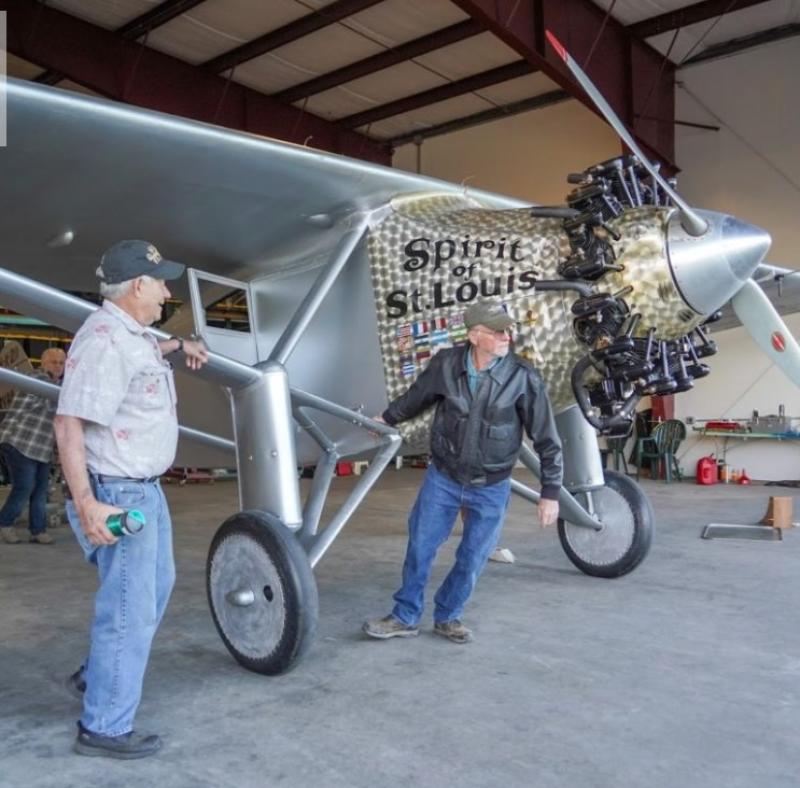How 'The spirit of St Louis' flew around the world
In 1926, Charles Linberg took on the challenge, a dream he had nurtured since he was a child. Jimmy Wanjala info@airspacenews.co.ke It’s the fall of 1926, May the twenty eighth…Roosevelt Field runway. The Wright J-5C Whirlwind radial engine revved up. Ten men in overalls push on the trailing edges of the straight high wing’s port and starboard side of the fuselage. The propeller slipstream made the muddy runway even more slippery as they began to push the heavily-loaded single engine airplane. The two-bladed steel-fixed pitch propeller barely generated sufficient thrust to break off and begin the takeoff roll without assistance from the engineers’ push. The mud stuck the wheels to the ground like glue. Ever since the advent of flight by Orville and Wilbur Wright on December 17, 1903, no aircraft had flown across the oceans between any two continents. In 1926, Charles Linberg took on the challenge, a dream he had nurtured since he was a child. What’s more, a $25,000 prize to be won for the first non-stop trans-Atlantic flight between New york and Paris had been set up by Raymond Orteig, a French American hotel owner in New York. Armed with dollars from some of his friends who were captains of industry, he attempted to buy a Wright Bellancae from Charles Lavigne, chairman of the Colombia Aircraft Corporation in New York. The businessman turned him down. He considered Lindberg to be inexperienced. He could only sell that plane to celebrity pilots such as Renee Fonck, who was known to have shot down 126 German pilots during World War I. In 1925, 31 out of 40 mail pilots had died in the line of duty. Flying between St Louis and Chicago, the snowstorms and blizzards during flight made Lindberg become very experienced. He had bailed out of aircraft four times to avoid crashing due to bad weather. It was the only way to keep his job. To his surprisingly good luck, the businessmen, many of whom Lindberg had taught to fly, refused to take their money back. They had faith in him. Renee Fonck would later attempt the trans-Atlantic challenge in a Sikorsky Trimotor but crashed upon takeoff at the end of the Roosevelt Field runway killing two of the four crew members. Lindberg got a breakthrough with Ryan Airlines in San Diego, California. Chief Engineer Donald A Hall agreed to design an airplane for the challenge prioritising efficiency and safety. The biggest concern was gas, which could run out midstream. In a record six weeks, The Spirit of St Louis went from a mere concept on paper to a prototype ready to fly. Besides the wing fuel tanks, another fuel tank was added obscuring the view in front of the windshield. A periscope was built onto the minimalistic instrument panel. The radio was not installed in order to keep the weight at a minimum. There was no co-pilot as this would require an extra fifty gallons of fuel in addition to the fuel required for the 3,600 mile flight. Even paper margins on his map were trimmed! Finally, the airplane began to accelerate slowly. The pilot tracked the centre line with difficulty using the rudders with his feet dancing on the pedals as if he was cycling back and forth on a bicycle. With forward pressure on the stick, the tailwheel begrudgingly rose from the ground. The rudder authority increased with every knot of airspeed, but so did the rate at which he approached the end of the runway. At takeoff velocity, he pulled back on the stick. The plane slowly rotated to a positive angle of attack and began to rise. The lift, however, became insufficient as the plane came out of ground effect forcing it to sink back and touch the ground before lifting off again. All the pistons fired hard in the nine cylinders but the humid air chopped off a few horsepowers. The wheels skimmed over the flooded paddles before finally leaving the ground, this time for another 36 hours at least. The telephone line sat at the end of the runway had never been too close to call. The Spirit of St Louis just missed hitting them by a whisker as it struggled between the best rate of climb and avoiding stalling margin. It flew low and slow. As if that was not enough hard luck, the tree line seemed to have gained more height overnight. He instinctively made a shallow bank towards the left, aiming for the widest apart tree tops at his 11 O’clock. The left wingtip clipped a soft branch without sustaining any visible damage. The airplane settled into a steady climb with obstacles now out of the way. A hundred and five nautical miles an hour later at 200 feet above the ground, 220 horses hauled Lindberg’s plane north along the Coast of New England to Nova Scotia and New Foundland where he set course for the Irish coast destination…Le Bourget, Paris, France. www.airspacenews.co.ke

